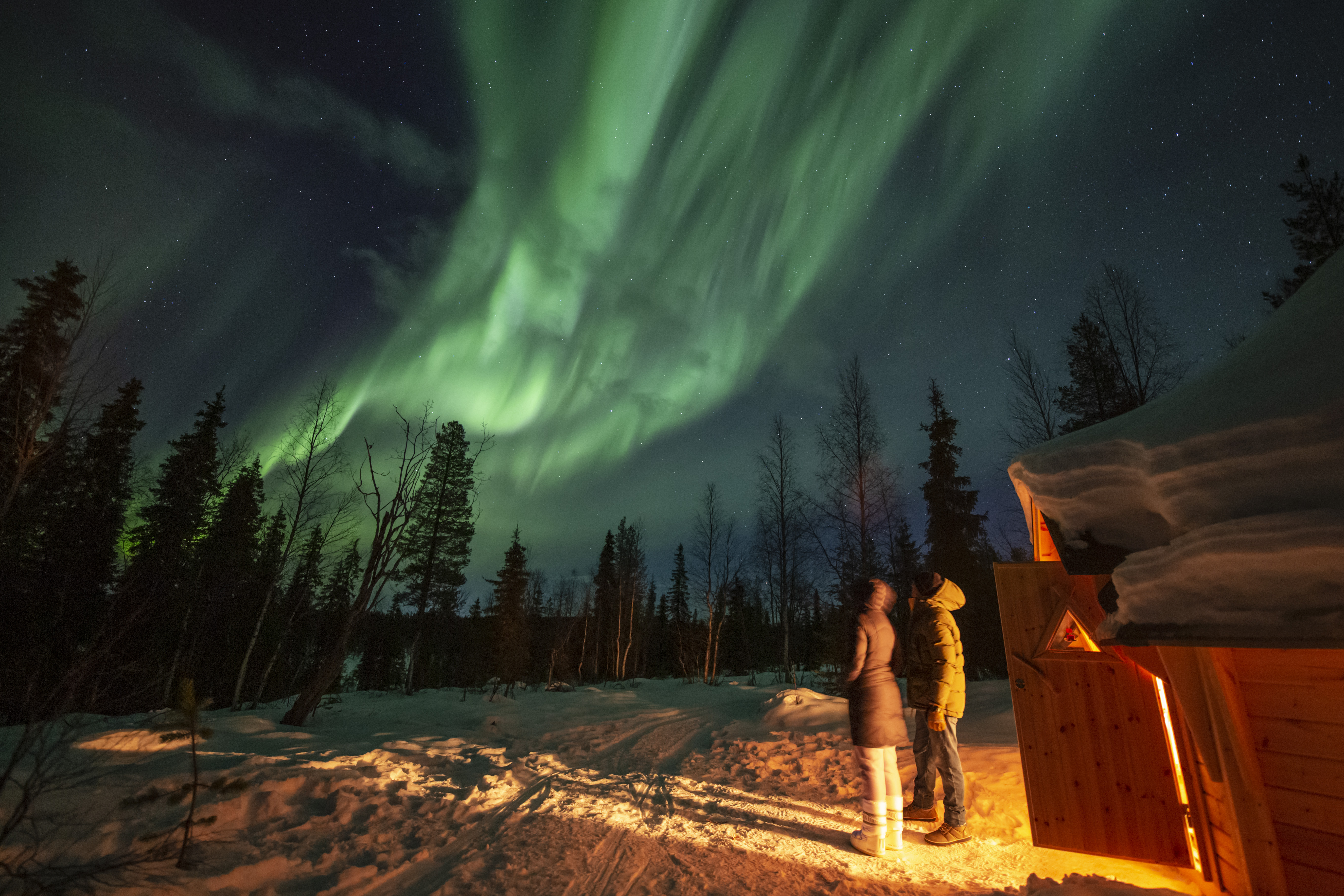The majority of auroral displays are predominantly green for two reasons: the first of which is that the human eye detects green more readily than other colours. This is why photographic images of the Northern Lights will often show colours that were not visible at the time to the naked eye.
However, the main factor in determining the colours of any given display is the altitude at which the solar particles collide with our atmosphere. Different gases prevail at different altitudes and in varying concentrations, and it is the collision which “excites” these gases that determines the colour of the Aurora.

We don’t see red in the Aurora Borealis too frequently, and the colour tends to be associated with intense solar activity.
Reds appear in the Aurora when solar particles react with Oxygen at higher altitudes, generally above 150 miles. At this height, the Oxygen is less concentrated and is “excited” at a higher frequency or wavelength than the denser Oxygen lower dow,n making reds visible.
Very occasionally, you can see yellow and pink in an Auroral display, which are associated with only high solar activity as they are simply a mixture of red with green or blue.
Most solar particles typically collide with our atmosphere at an altitude of around 60 to 150 miles, where there are high concentrations of oxygen. When the Oxygen is “excited” at these altitudes, it causes the Aurora to appear in shades of green. Coupled with the eye’s greater ability to detect the green colour spectrum, this makes it the most predominant and frequent Auroral colour.
Blue and purple are also colours which are seen less frequently, and again, they tend to appear when solar activity is high. In this case, the colours are caused by particles colliding with our atmosphere at an altitude of 60 miles or less. At these heights, it is a reaction with Nitrogen that causes the Aurora to be tinged with purple or blue and most commonly, you will see these colours towards the lower parts of the display.
Image credits: Northern Lights Village